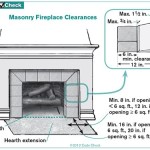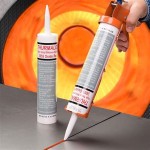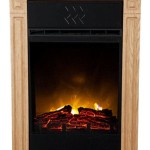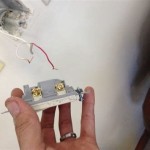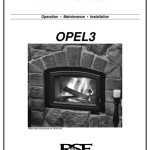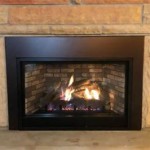What Is Fake Fireplace Wood Made Of?
Fake fireplace wood, also known as artificial fireplace logs or faux wood, serves as a decorative and often functional alternative to natural wood in gas fireplaces, electric fireplaces, and even some outdoor fire pits. These artificial logs provide the aesthetic appeal of a real wood fire without the associated mess, hazards, and fuel requirements. The materials used in their construction vary depending on the intended use, durability requirements, and desired realism. Understanding the composition of fake fireplace wood is crucial for selecting the appropriate type for a given fireplace and ensuring its safe and efficient operation.
The primary purpose of fake fireplace wood is to replicate the look of natural logs, complete with bark details, knot patterns, and charring effects. Manufacturers employ a range of techniques and materials to achieve this realistic appearance, often combining several materials within a single log set to optimize both aesthetics and performance. The choice of materials also influences the longevity of the fake wood, its resistance to heat, and its ability to distribute flames evenly in gas fireplaces.
The construction of fake fireplace wood is a multifaceted process that begins with the selection of appropriate raw materials. These materials are then molded, textured, and finished to resemble real wood. The internal structure of each log often includes features that enhance its performance, such as gas dispersal channels or reinforcement for added durability. The complexity of this process reflects the desire to create a product that is not only visually appealing but also functional and safe for use in heating appliances.
Common Materials Used in Fake Fireplace Wood
Several materials are commonly used in the manufacturing of fake fireplace wood. These include refractory ceramic, concrete mixtures, and ceramic fiber. Each material offers distinct properties that make it suitable for different aspects of log construction. The choice of material often depends on whether the primary goal is heat resistance, realistic appearance, or structural integrity.
Refractory Ceramic: One of the most common materials used in gas fireplace logs, refractory ceramic is prized for its high heat resistance and ability to withstand the intense temperatures produced by gas flames. This type of ceramic is specifically formulated to resist thermal shock, meaning it can endure rapid changes in temperature without cracking or degrading. Refractory ceramic logs are typically molded to resemble various types of wood and are often finished with a coating that simulates the charred appearance of burned logs. The porous nature of refractory ceramic also allows it to distribute gas flames evenly, creating a more realistic and visually appealing fire.
The manufacturing process for refractory ceramic logs involves creating a mold of real wood logs to capture their intricate details. The ceramic material is then poured into the mold and fired at high temperatures to harden it. The resulting logs are durable, long-lasting, and capable of withstanding repeated use in gas fireplaces without significant deterioration. Refractory ceramic logs are a popular choice for homeowners seeking a reliable and realistic alternative to natural wood.
Concrete Mixtures: Concrete is another material frequently used in the construction of fake fireplace wood, particularly for electric fireplaces and some outdoor fire pits. Concrete logs are generally more affordable than refractory ceramic logs and can be molded into a wide variety of shapes and sizes. Concrete logs are typically reinforced with steel fibers or other materials to increase their strength and durability. While concrete is not as heat-resistant as refractory ceramic, it is still capable of withstanding the moderate temperatures produced by electric fireplaces and outdoor fire pits.
Concrete logs are often finished with a textured coating that resembles the bark of real wood. This coating can be painted or stained to achieve a specific color and appearance. The manufacturing process for concrete logs is similar to that of refractory ceramic logs, involving the use of molds to create the desired shape and texture. Concrete logs are a cost-effective option for homeowners who want the look of a wood-burning fireplace without the expense and maintenance associated with natural wood.
Ceramic Fiber: Ceramic fiber is a lightweight and highly heat-resistant material that is sometimes used in conjunction with other materials to create fake fireplace wood. Ceramic fiber is often used as a filling material to reduce the weight of the logs and improve their insulation properties. It can also be used to create realistic ember beds or glowing effects in gas fireplaces. Ceramic fiber is resistant to high temperatures and does not burn, making it a safe and effective material for use in fireplaces.
Ceramic fiber logs sometimes incorporate a thin coating of refractory ceramic or a similar material to provide a more rigid and durable exterior. This combination of materials allows for the creation of logs that are both lightweight and heat-resistant. The use of ceramic fiber in fake fireplace wood can also improve the efficiency of gas fireplaces by reflecting heat back into the room. Ceramic fiber logs are a popular choice for homeowners who want a lightweight and energy-efficient alternative to natural wood.
Manufacturing Processes and Techniques
The manufacturing of fake fireplace wood involves a variety of processes and techniques, each designed to enhance the realism, durability, and functionality of the logs. These processes include molding, texturing, finishing, and incorporating features that improve their performance in fireplaces.
Molding: Molding is a critical step in the manufacturing process, as it determines the shape and size of the logs. Manufacturers typically use molds made from silicone, rubber, or other flexible materials to capture the intricate details of real wood logs. The molds are created by casting real logs and then precisely replicated to ensure accuracy. The molding process allows for the creation of logs with realistic bark textures, knot patterns, and other natural features. The type of molding process used depends on the material being used to create the logs. For example, refractory ceramic logs are typically cast in molds, while concrete logs may be molded or poured into forms.
Texturing: Texturing is the process of adding surface details to the logs to make them look more realistic. This can be done using a variety of techniques, including hand-carving, sandblasting, and applying textured coatings. Hand-carving involves using tools to create the appearance of bark, knots, and other natural features. Sandblasting can be used to create a rough, weathered texture on the surface of the logs. Textured coatings can be applied to the logs to simulate the appearance of charred wood or other effects. The texturing process is essential for creating fake fireplace wood that closely resembles natural logs.
Finishing: Finishing involves applying coatings, paints, or stains to the logs to enhance their appearance and protect them from damage. Coatings can be used to create a glossy or matte finish, while paints and stains can be used to achieve a specific color and appearance. The finishing process also helps to protect the logs from moisture, UV radiation, and other environmental factors. Some manufacturers use specialized coatings that are designed to withstand high temperatures, making them suitable for use in gas fireplaces. The finishing process is the final step in the manufacturing of fake fireplace wood and is crucial for creating a product that is both visually appealing and durable.
Internal Features: Many fake fireplace logs include internal features that improve their performance in fireplaces. For gas fireplaces, logs may include gas dispersal channels that help to distribute the flames evenly. These channels are designed to create a realistic fire pattern and maximize heat output. Some logs also include reinforcement materials, such as steel fibers or mesh, to increase their strength and durability. For electric fireplaces, logs may include heating elements or LED lights to create a realistic flame effect. The inclusion of internal features is a key factor in the functionality and performance of fake fireplace wood.
Factors Influencing Material Selection
Several factors influence the selection of materials for fake fireplace wood, including the type of fireplace, budget constraints, desired aesthetics, and safety considerations. Manufacturers carefully consider these factors when designing and producing their products to ensure that they meet the needs of their customers.
Type of Fireplace: The type of fireplace is a primary factor in determining the appropriate materials for fake wood. Gas fireplaces require logs made from heat-resistant materials, such as refractory ceramic or ceramic fiber, to withstand the high temperatures produced by the flames. Electric fireplaces, on the other hand, can use logs made from less heat-resistant materials, such as concrete or plastic, as they generate less heat. Outdoor fire pits may also use concrete logs, but it is important to ensure that they are designed to withstand exposure to the elements.
Budget: Budget constraints often play a significant role in the selection of materials for fake fireplace wood. Refractory ceramic logs are generally more expensive than concrete logs, due to the higher cost of materials and manufacturing processes. Homeowners who are on a tight budget may opt for concrete logs or other lower-cost alternatives. However, it is important to consider the long-term durability and performance of the logs when making a decision based on budget.
Aesthetics: The desired aesthetic is another important factor in the selection of materials. Refractory ceramic logs are often considered to be the most realistic, as they can be molded to capture the intricate details of real wood logs. Concrete logs can also be made to look realistic, but they may not have the same level of detail. The choice of materials will depend on the homeowner's personal preferences and the overall design of the fireplace.
Safety: Safety considerations are paramount when selecting materials for fake fireplace wood. It is important to choose logs that are made from non-combustible materials and that are designed to withstand the temperatures produced by the fireplace. Logs should also be properly installed and maintained to prevent hazards. Manufacturers typically provide safety guidelines and instructions for their products to ensure that they are used safely.

Diy Faux Fireplace Made From An Upcycled Hutch Chica And Jo

Diy Faux Fireplace And Mantel Twelve On Main

Diy Fireplace With Electric Insert Angela Marie Made

What Are Ceramic Gas Fireplace Logs Made Of

What Are Gas Fireplace Logs Made Of The Surprising Answer Dreifuss Fireplaces

Indoor Decor Eco Friendly Fake Fireplace Wooden Surround Frame Mantel With Solid Wood E0 Board And Adjustable Flame Effect China Fire Surrounds Made In Com

Factory Hs Glass Simple Style Mdf Fake Fireplace China Modern Furniture Made In Com

Fake Fireplace Electric Logs 6 Rectangle Lantern For Com

Chevron Style Faux Fireplace With Bottom Base Free Mid Century Modern

Faux Fireplace With A 32 Flat Screen T V The Rocket Scientist

